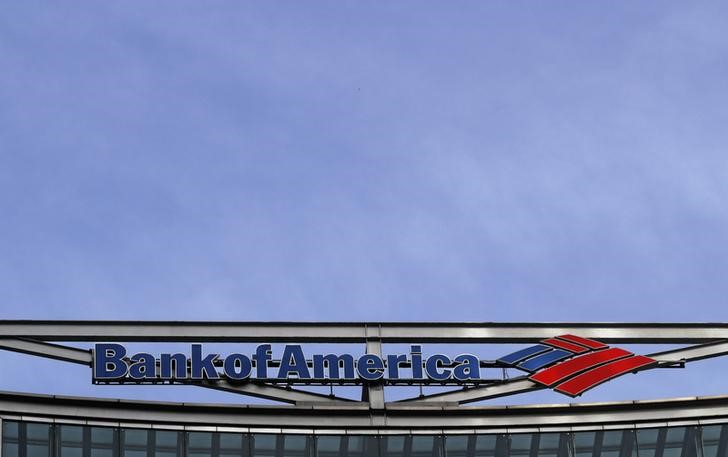By Richa Naidu and Nikhil Subba
(Reuters) - Bank of America Corp (N:BAC), the No. 2 U.S. bank by assets, reported an 18 percent slide in quarterly profit on Thursday as its trading business was hit by concerns about a global economic slowdown and uncertainty about U.S. interest rates.
The profit was in line with the market's low expectations after what was widely being seen as the grimmest quarter for the banking industry since the financial crisis.
Market volatility stemming from a slide in commodity and oil prices, worries about China's economy and uncertainty about interest rates hit trading activity globally in the quarter, particularly in January and February.
The bank's revenue also fell short of Wall Street's expectations, as adjusted revenue from bond, currency and commodities trading slid 17.5 percent to $2.26 billion (£1.6 billion).
Charlotte, North Carolina-based BofA, one of the biggest U.S. lenders to the oil and gas industry, said total provisions rose 30 percent to $997 million in the quarter ended March 31, largely due to potential losses on energy loans.
A report by Barclays (LON:BARC) estimated that 2.3 percent of BofA's total loans were energy-related at the end of December.
"The bank feels very good about its energy reserves," Bank of America's chief financial officer, Paul Donofrio, said on a call with reporters.
About a third of publicly traded oil and gas-related companies, with more than $150 billion in debt, are at high risk of bankruptcy this year, according to a report by auditing and consulting firm Deloitte.
This week alone, Peabody Energy Corp (N:BTU), the biggest U.S. coal miner, and Energy XXI Ltd (O:EXXI), a significant oil and gas producer in Louisiana, Texas and the Gulf of Mexico, filed for bankruptcy protection.
"CREDIT QUALITY STRONG"
BofA's shares, which fell 20 percent in the quarter, were down slightly in premarket trading after rising 3.9 percent on Wednesday following better-than-expected earnings from JPMorgan Chase & Co (N:JPM), the biggest U.S bank.
JPMorgan, whose results had helped to allay some concerns about the quarter for U.S. banks, reported a 13.4 percent decline in bond trading revenue.
Overall credit quality remained strong, the bank said, while consumer portfolios continued to improve and commercial portfolios remained stable except in the energy sector.
BofA's net income attributable to common shareholders fell to $2.22 billion, or 21 cents per share in the three months ended March 31. Excluding items, the bank earned 20 cents per share, matching the average analyst estimate.
Results in the latest quarter included pretax adjustments of about 12 cents per share.
The bank's adjusted revenue of $19.57 billion was short of the average analyst estimate of $20.30 billion, according to Thomson Reuters I/B/E/S.
Mortgage banking revenue slumped 37.6 percent to $433 million. JPMorgan's revenue from the business rose 7 percent.
BofA's non-interest expenses fell 6.4 percent to $14.82 billion, mainly due to a 28 percent drop in costs in its legacy assets and servicing unit, home to many bad loans inherited from its 2008 purchase of subprime lender Countrywide Financial.
BofA - which has been slower than its rivals to recover from the financial crisis because of problems linked to Countrywide - has been slashing billions of dollars in costs in its commercial lending, investment banking and wealth management businesses to try to make up for sluggish revenue growth.
While Bank of America has shown some progress, it still has to prove it can generate consistent performance under Chief Executive Brian Moynihan, who took the helm in 2010.
During his tenure, the bank has paid tens of billions of dollars in fines and settlements related to mortgages that were issued before he became CEO.

Adding to his problems, regulators said on Wednesday that BofA could face stricter regulations and capital requirement limits if it did not correct deficiencies in its plans for a bankruptcy that did not rely on taxpayer money.